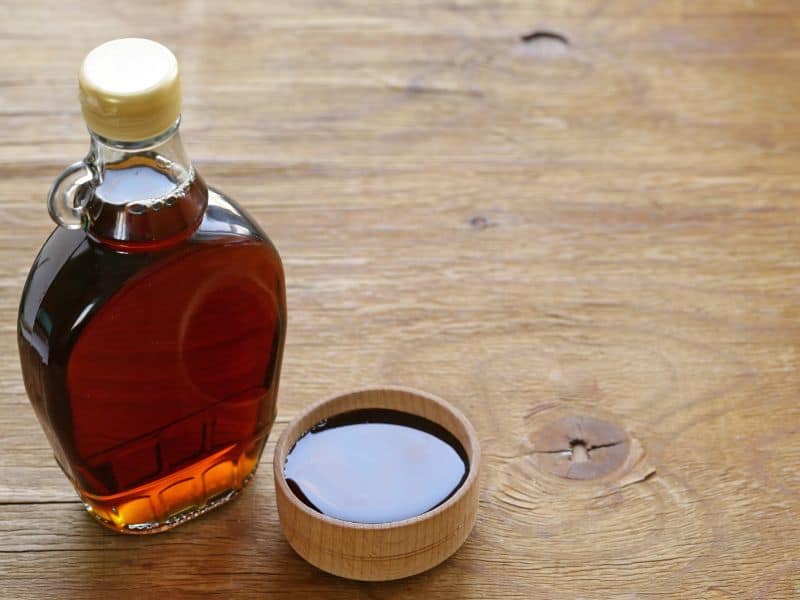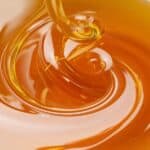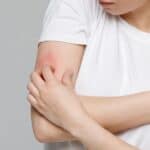Do you love crafting homemade soaps and feel eager to try something new? Could maple syrup be an exciting addition to your soap-making repertoire? In this article, we’ll explore the potential of adding maple syrup to your next batch of soap and determine if it’s a viable option.
You can use maple syrup in soap. Maple syrup adds moisturizing and soothing properties to soap, as well as providing antioxidants. Experiment with recipes to create unique, skin-loving soaps with the delightful addition of maple syrup.
When incorporating maple syrup into your soap, start with a small amount and adjust as needed. Maple syrup can enhance lather, create a unique texture, and contribute to skin health.
Keep in mind that using maple syrup may affect soap hardness or shelf life, so experiment carefully to find the perfect balance for a truly luxurious and nourishing soap experience.
Let’s take a closer look at using maple syrup in soap and its benefits.
Using Maple Syrup in Soap: The Basics
Yes, you can use maple syrup in soap! It’s all about experimenting with recipes and finding the right balance. Start by adding a small amount of maple syrup to your basic soap recipe, and observe the changes it brings. You may need to adjust other ingredients or the soap-making process to achieve the desired result.
Maple syrup can impact your soap in various ways. Its natural sugars can boost lather, making the soap feel more luxurious. However, it may also cause the soap to become softer or have a shorter shelf life due to its high sugar content. Careful consideration is needed to determine the right amount of maple syrup for your soap.
Benefits of using maple syrup in soap include added moisturization, a unique texture, and potential antioxidant properties. Some drawbacks could be a shorter shelf life, a softer soap, or a longer curing time. It’s essential to weigh the pros and cons before deciding to include maple syrup in your soap recipe.
Maple Syrup to Different Soap Making Methods
Melt and Pour Method
The melt and pour method is beginner-friendly and involves melting a pre-made soap base, adding your desired additives, and pouring it into molds.
To add maple syrup to a melt and pour soap:
- Start with 1 teaspoon of maple syrup per pound of soap base.
- Warm the soap base according to the manufacturer’s instructions.
- Add the maple syrup to the melted soap base, stirring gently to incorporate.
- Adjust the amount of maple syrup based on your preferences and the soap’s texture.
Cold Process Method
The cold process method involves mixing oils and lye to create soap through saponification.
When adding maple syrup to a cold process soap:
- Begin with 1 tablespoon of maple syrup per pound of oils in your recipe.
- Subtract the same amount of water as the added maple syrup from your lye water solution to maintain the correct liquid ratio.
- Mix your oils and lye solution as usual, reaching a light trace.
- Add the maple syrup, blending it thoroughly into the soap mixture.
- Monitor the temperature closely, as maple syrup can cause the soap to heat up faster.
Hot Process Method
The hot process method is similar to the cold process but includes heating the soap mixture to speed up saponification.
To add maple syrup to hot process soap:
- Use 1 tablespoon of maple syrup per pound of oils in your recipe.
- Reduce the water in your lye solution by the same amount of maple syrup added to maintain the liquid balance.
- Follow the standard hot process method, combining oils and lye solution, then heating the soap mixture until saponification is complete.
- Allow the soap mixture to cool slightly, then add the maple syrup, stirring well to incorporate.
- Pour the soap into molds and let it cool completely before unmolding and cutting.
In all methods, feel free to adjust the amount of maple syrup based on your preferences and desired soap properties.
Experimenting with different quantities will help you find the perfect balance for your maple syrup-infused soap.
The Science of Soap Making
Soap making is a fun and creative activity. At its core, soap is made by combining fats or oils with an alkali, usually lye. When these ingredients are mixed, a chemical reaction called saponification occurs, producing soap and glycerin. This process can be done using either the cold process or hot process method.
Fats and oils play a crucial role in soap making. They determine the soap’s final properties, like hardness, lather, and moisturizing ability. Different oils, such as olive, coconut, and palm, offer unique benefits to the soap. It’s important to use the right combination for your desired outcome.
Lye, a strong alkali, is essential for saponification. It breaks down the fats and oils, allowing them to combine with water and create soap. Lye comes in two forms: sodium hydroxide for solid soap and potassium hydroxide for liquid soap. Proper safety measures must be taken when handling lye to avoid burns and injuries.
Maple Syrup’s Composition
Maple syrup is a natural sweetener made from the sap of sugar maple trees. It contains primarily sucrose, along with smaller amounts of glucose and fructose. These natural sugars give maple syrup its signature sweetness and might affect the soap’s final texture.
In addition to sugars, maple syrup is packed with minerals like calcium, potassium, and magnesium. It also contains antioxidants, which can help protect the skin from damage caused by free radicals. Adding maple syrup to soap could provide these skin-loving benefits.
Maple syrup has a thick, sticky consistency, which may impact the soap’s texture. Depending on the amount used, the soap could become softer, more moisturizing, or have a unique feel. Careful experimentation is key when incorporating maple syrup into your soap recipe.
Successful Maple Syrup Soap Recipes
There are many successful soap recipes that incorporate maple syrup. These recipes have been tested and tweaked to create a soap with an appealing texture, lather, and shelf life.
Look for recipes from experienced soap makers or online forums to find one that suits your preferences.
Tips for a Perfect Batch
To make a perfect batch of maple syrup soap, consider these tips:
- Use a small amount of maple syrup at first, and increase gradually as needed.
- Be prepared to adjust your recipe, as the maple syrup may affect the soap’s hardness or curing time.
- Monitor the temperature closely, as sugars can cause the soap to heat up quickly.
- Use a stick blender for thorough mixing, ensuring the maple syrup is evenly distributed throughout the soap.
Customizing Your Soap
One of the best aspects of soap making is the ability to customize your creations. With a maple syrup soap base, you can experiment with various additives like essential oils, natural colorants, or exfoliants to create a truly unique soap.
Don’t be afraid to get creative and make your soap recipe your own.
Maple Syrup Soap Benefits for Skin
Moisturizing Properties
Maple syrup soap can be incredibly moisturizing for your skin. The natural sugars in maple syrup attract and retain water, helping to keep your skin hydrated. This can lead to a softer, smoother, and more supple complexion after using the soap.
Antioxidant Benefits
Maple syrup is rich in antioxidants, which can protect your skin from damage caused by free radicals. These antioxidants may help reduce the appearance of fine lines, wrinkles, and other signs of aging. By incorporating maple syrup into your soap, you could be providing your skin with an extra layer of defense against environmental stressors.
Soothing Effects
Maple syrup has soothing properties that can help calm irritated or sensitive skin. Its natural sugars and minerals may help alleviate redness and inflammation, making maple syrup soap a suitable choice for those with delicate skin types.
Alternatives to Maple Syrup in Soap
If you’re interested in experimenting with natural sweeteners in soap, there are several alternatives to maple syrup.
Honey is a popular choice, known for its antibacterial properties and ability to retain moisture.
Agave nectar, with its high fructose content, can also create a smooth, silky lather. Other options include molasses and brown sugar, each offering unique characteristics to your soap.
While each natural sweetener has its own set of benefits, they all share some similarities with maple syrup. They can provide moisturizing, soothing, and antioxidant properties, although in varying degrees.
The choice between them largely depends on personal preferences, availability, and the specific attributes you want to include in your soap.
Choosing the Right Sweetener
To choose the right natural sweetener for your soap, consider the following factors:
- Skin benefits: What benefits do you want your soap to provide? Each sweetener has its own set of advantages, so research their properties to determine the best fit.
- Availability: Some sweeteners, like maple syrup or honey, may be easier to source locally than others, such as agave nectar.
- Cost: The price of sweeteners can vary greatly, so factor in your budget when making a decision.
- Experimentation: Don’t be afraid to try different sweeteners in your soap recipes to find the one that works best for you.
Frequently Asked Questions
Maple syrup can impact a soap’s texture by making it softer or more moisturizing. The final texture depends on the amount used and the recipe’s other ingredients.
Monitor the temperature closely when using maple syrup in soap, as its sugars can cause the mixture to heat up quickly. Also, ensure the even distribution of maple syrup by using a stick blender.
Maple syrup shares some similarities with other natural sweeteners, such as moisturizing and soothing properties. The choice between them depends on personal preferences and the specific attributes desired in the soap.
Yes, maple syrup can be combined with various additives like essential oils, natural colorants, or exfoliants to create a truly unique soap. Feel free to get creative with your soap recipe.
Factors to consider when choosing a natural sweetener for soap include skin benefits, availability, cost, and personal preference. Experimenting with different sweeteners can help you find the best fit for your soap recipe.
Conclusion
In conclusion, incorporating maple syrup into your soap-making endeavors can lead to unique, skin-nourishing creations with added moisturizing, soothing, and antioxidant properties.
As you experiment with recipes and techniques, you’ll discover the perfect balance of maple syrup to craft soaps that not only cleanse but also provide an enjoyable, luxurious experience.
So, don’t hesitate to let your creativity shine and embark on a soap-making adventure that explores the delightful world of maple syrup-infused soaps.






